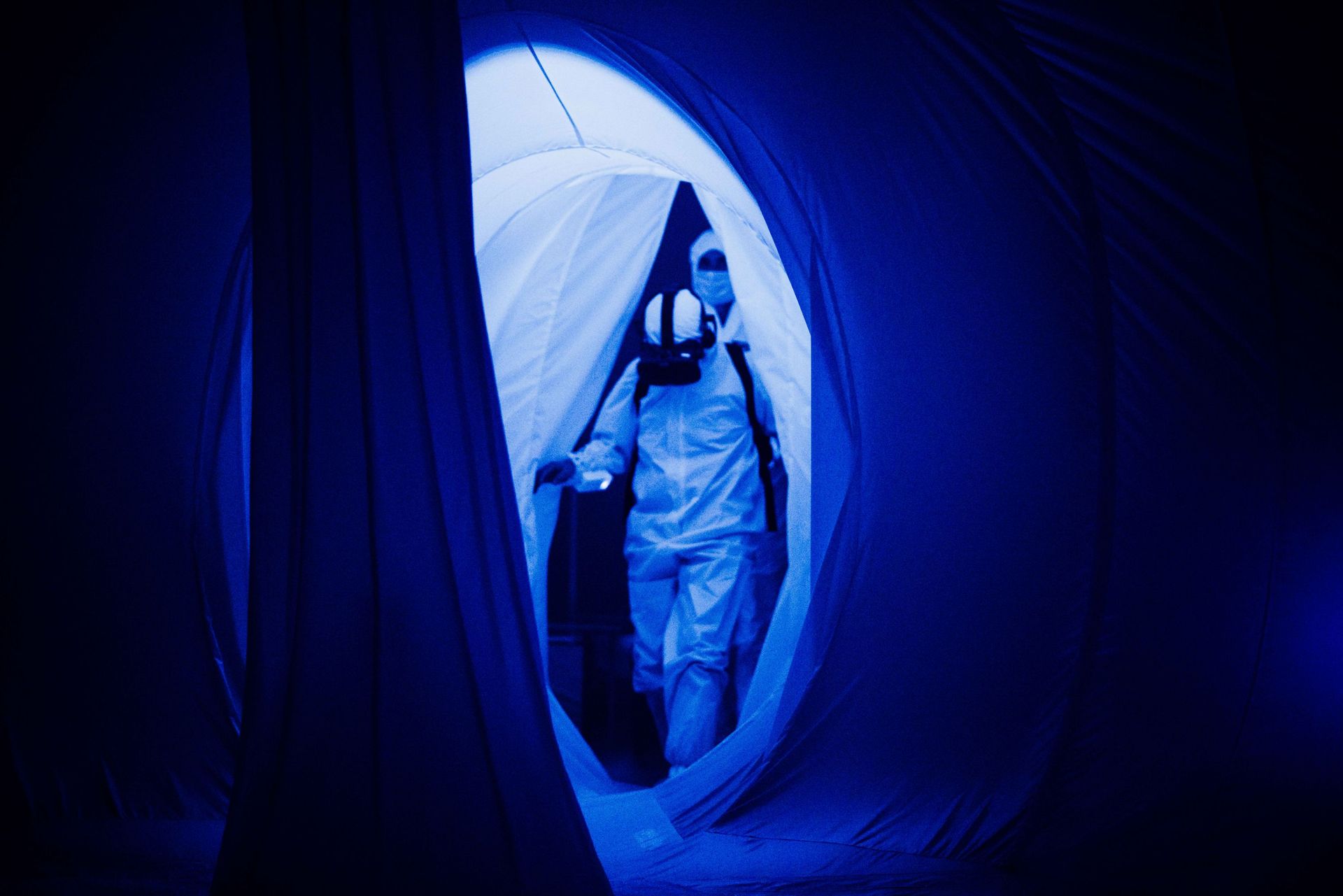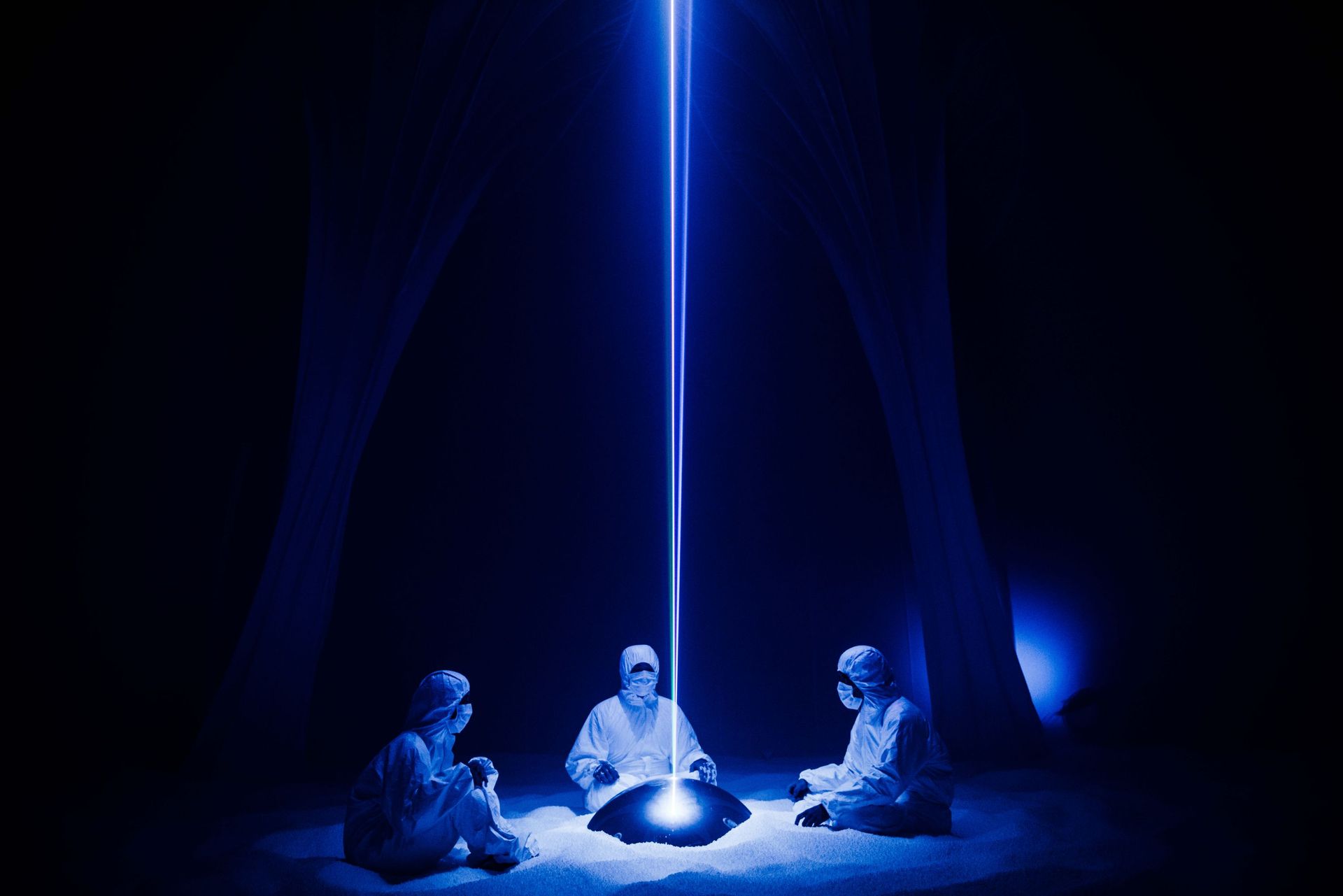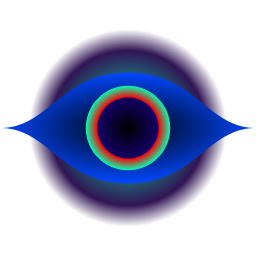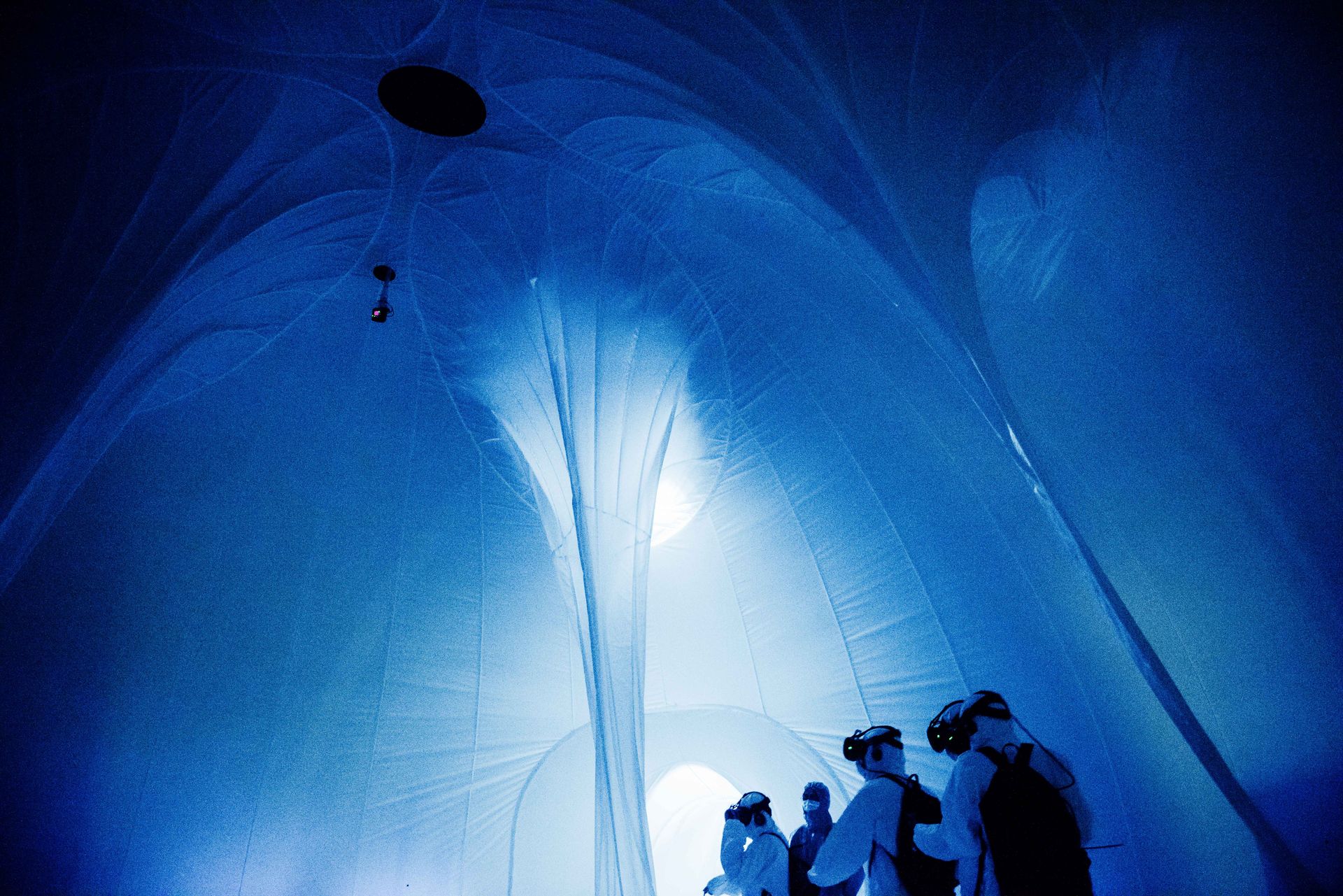Render Ghost
Immersive VR Theater, 2016-2018
"Render Gohst" is an immersive VR theater work. At the onset of consumer VR's popularity, this piece challenged the concept of large-scale, multi-person VR experiences, exploring actorless ritual theater and post-human themes. The work received the First Prize at the Taiwan Digital Art Performance Award and is recognized as a representative VR piece in Taiwan.
In the theater experience, audience members donned dust suits and carried heavy computers with VR displays, resembling pilgrims in the Tibetan Buddhist "KORA" ritual, climbing a tower constructed from discarded information. At the performance's end, viewers removed their helmets to experience illusions crafted from soundscapes, particle storms, and dense fog, all constructed using lasers and lights.
As our bodies inevitably merge into a new reality mediated by screens, networks, and algorithms, our bodies, memories, and consciousness are gradually transformed through the transmission of fiber-optic cables. With the approach of the "post-human" era, NAXS created a virtual ritual, imagining the future dissolution of the human body into digital information and reflecting on the contemporary reality of technology as a new mythology.


 Audience climbing a virtual tower inside the VR
Audience climbing a virtual tower inside the VR


Achievement
Award
2015, Digital Performance Art Award, First Prize, Taiwan
2019, Lumen Prize, nominated, UK
Performance
2018 《Render Ghost - XATAR》, Times Art Museum, Beijing
2018 《Render Ghost》 v4, National Taiwan Museum of Fine Arts, Taichung
2017 《Render Ghost》 v3, Taipei Backstage Pool, Taipei
2016 《Render Ghost》 v2, Taiwan Air Force-Innovation Base Badminton Hall, Taipei
2015 《Render Ghost》 v1, Taipei Digital Art Festival, The 6th Digital Art Performance Award, Wellspring Theater, Taipei
Exhibition
2019, Ars Electronica, Screening at EXPANDED ANIMATION, Austria
Credit
Writer & Director: Yi Kuo, Han Yu Feng
Producer: Zhi Han Liao
Technical Director: Yi Kuo
Visual Director: Han Yu Feng
Sound Design: Chuan Yi Yang
Stage Design:Yi Kuo
Light Design: Zhi Yu Xie, Yi Kuo(2015)
VR Content: Han Yu Feng, Yi Kuo
Laser Design: Ting Hao Yeh,
Unity Developer: Yi, Kuo, Kui Ming Zeng, Zhe Yu Lin

